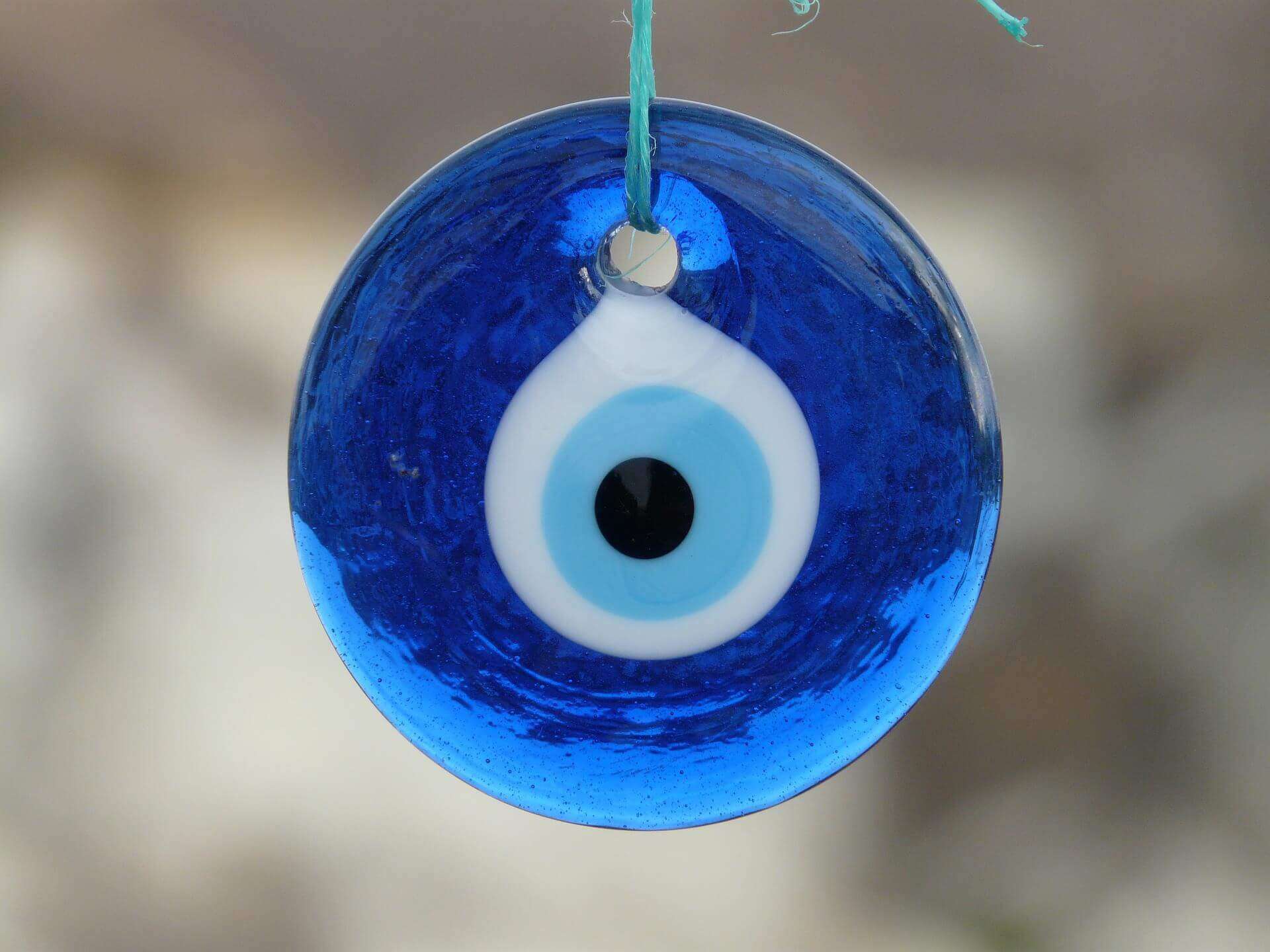
Table of Contents
As Jewelry Shopping Guide editors, we write about things that we love and we think you’ll like too. We often have affiliate partnerships, and may generate some revenue from these links at no cost to you.
The Nazar, commonly known as the Nazar boncugu, is a beautiful bead also known as the Evil Eye. Worn as a protective talisman, the Nazar boncugu originated in Turkey and from there spread across the world. It is one of the most famous and easily recognizable designs globally.
There is something mysterious about the nazar, something intriguing. It seems to draw you in while at the same time keeping aloof. What is it about the nazar that makes for its enduring appeal?
Let’s take a look at everything you need to know about the nazar boncugu before you decide if it’s the right symbol for you to wear.
The History of the Nazar
It is characteristically a blue glass bead containing smaller concentric circles within it. These are often pale blue, yellow, white, or black.
The nazar as we know it today originated in a small village in Turkey from where it spread around the world. If you travel to Turkey, you will notice this symbol everywhere, on doorways, attached to clothing and even in cars and workspaces. It is extremely popular in countries such as Greece, Pakistan, Iran and other Asian and Middle Eastern Countries.
Although the nazar is attributed to Turkey, the symbol goes back about 3000 years ago. It is said that the nazar boncugu can be traced to ancient Egypt, where the eye of the God Osiris was believed to have protective powers. From this grew the idea of the Benevolent Eye.
The Nazar and Religion
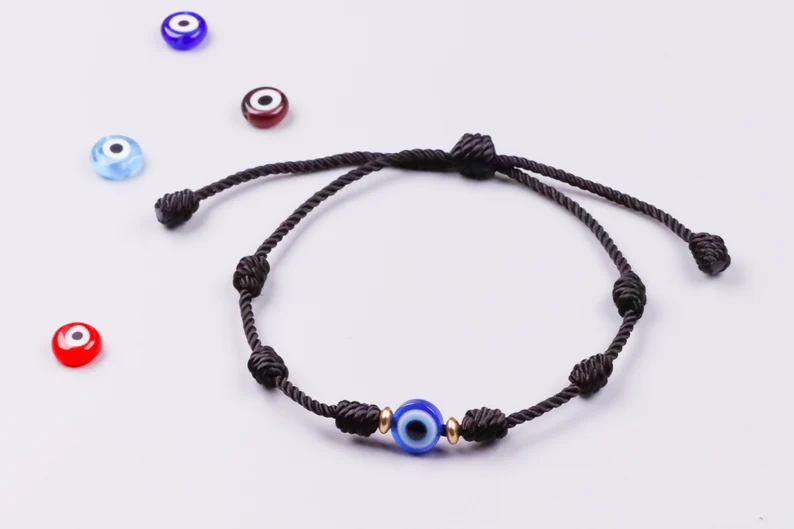
The nazar has been used by many religions throughout history as a symbol against evil, and a representation of good luck. The nazar pre-dates all organized religions and has links to paganism as well. No single religion can lay claim to the nazar and some religions, such as Christianity, can have conflicted views regarding the nazar.
If you’re a Christian wondering whether this symbol is accepted by the Church, it’s best to check with your church regarding their stance on the symbol. Generally, most people feel comfortable wearing the nazar as a piece of jewelry (and not as an amulet) and appreciate its simple and historic design.
So should you wear the nazar?
If you are a Christian, this is entirely your decision to make based on how you feel about wearing it.
What are its names?
The nazar is known by many names around the globe. The word nazar comes from the Arabic word for eye or look while boncugu means bead in Turkish. Another common name for the nazar in Turkey is mancuk. Here are some names for the nazar from around the world.
- It was called malus by the Romans.
- The Greeks called it baskania.
- The Persians call it the chesm nazar or nazar ghorboni.
- The nazar was called mallochio by Italians
- The Spanish called it mal ojo which means bad or evil eye.
- In Hebrew it is called ayin hara.
The nazar is also sometimes called the Lucky Eye. As you can see, this symbol has links around the world.
Nazar Meaning
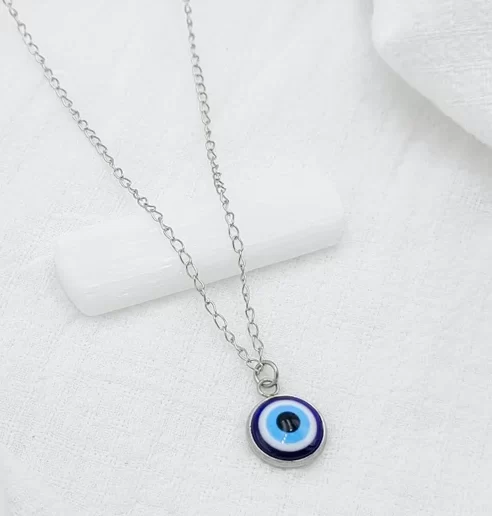
Throughout history, humans have always been afraid of the evil eye. This has been a pervasive belief and fear that can be found in many cultures across the globe. Even today, there is the fear of the evil eye.
So what exactly is the evil eye?
The evil eye refers to a kind of spell that can cause damage and misfortune to someone if it is the subject of the evil eye. The evil eye is defined as a gaze or stares by an envious or jealous person that is believed to cause harm, usually directed towards someone who is unaware of this. In many cultures, it is believed that if you’re on the receiving end of the evil eye, you will face injury, harm, or some sort of misfortune. To ward off this evil eye, a talisman or amulet should be worn to distract the gaze of the evil eye.
For example, in many Asian countries like Sri Lanka, a large black dot is often painted on the forehead of a newborn baby. This is to ward off any evil that comes with excessive complimenting that is directed towards the baby. The logic? The person staring at the baby will be distracted by the dot and the dot will absorb the evil eye.
The nazar is purported to work in much the same way.
If someone gives you the evil eye, wearing the nazar can ward it away. As such, the nazar is a cherished talisman to protect you from evil. If you got sick because someone gave you the evil eye, wearing a nazar would have kept you safe.
Is the Nazar the Evil Eye?
Here’s where most people get confused. Some people believe that the nazar is the evil eye and that it causes evil.
Far from it.
According to superstition, the nazar only wards off the evil eye, it does not cause it. It is not an evil symbol, but rather, a symbol of protection. It should really be called the Lucky Eye or the Benevolent Eye.
Types of Nazar Jewelry
The nazar is found in various styles and can be used in different ways, including in wall hangings or as an amulet to hang in your car or workplace.
One of its common uses is in jewelry. The nazar can be worn in stylized or traditional designs to suit any fashion styles.
The nazar is popularly worn on pendants, where it can easily be seen by both you and others. There are many ways that jewelers choose to represent the nazar. You can buy an inexpensive blue glass bead for under 10 dollars or pay several hundred dollars for one made of gems and precious metal. The choice is yours.
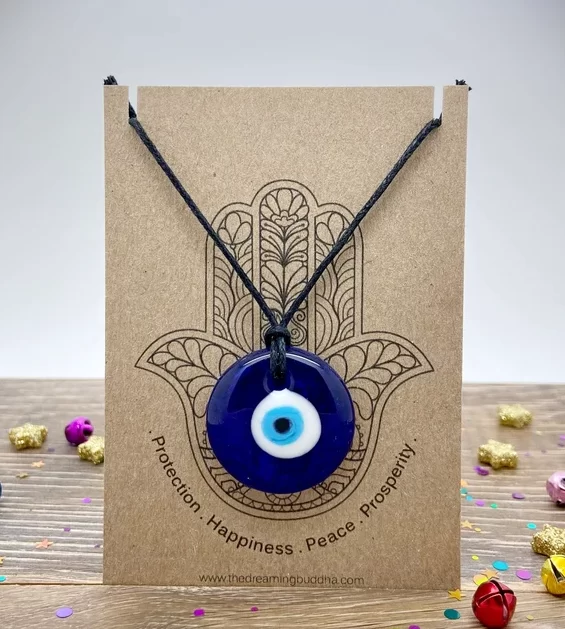
Another popular way to wear the nazar is in bracelets like this one. Every time you look down at your hand, you will see the nazar with its connotations of protection and fortune. Because the nazar is often stylized, you can wear a bracelet that contains the nazar pretty inconspicuously.
The nazar is also often found embedded in the hamsa symbol. The hamsa shows a hand either facing upwards or downwards, symbolic of good fortune, abundance and a fight against evil. Often, the nazar is added onto the palm of the hamsa, as a sign of repelling evil. You can choose to purchase a hamsa symbol that contains a nazar for additional symbolism.
Related Article: The Hamsa Hand Meaning in Jewelry
Should I Wear the Nazar Symbol?
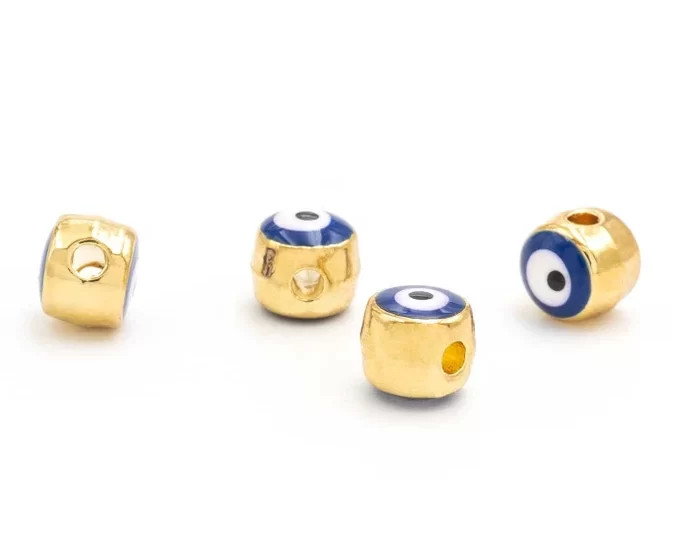
Anyone can wear the nazar boncugu. It is not a culturally sensitive design. In fact, if you go to Turkey, you will see that the nazar is heavily used as souvenirs. Regardless of your faith or belief, you can wear the nazar if you feel comfortable with its symbolism.
Wearing a piece of jewelry that contains the nazar is a way of expressing your style and what matters to you. Whether it is simply a fashion choice or something deeper, the nazar offers something for everyone. It is a symbol that radiates with positivity and good vibes.
The best place to buy the nazar is in Turkey, so if you ever visit, make sure you bring back one of these beautiful souvenirs. The next best place? Probably the internet. Amazon has lots of beautiful nazar jewelry so you might be able to find what you’re looking for there!









